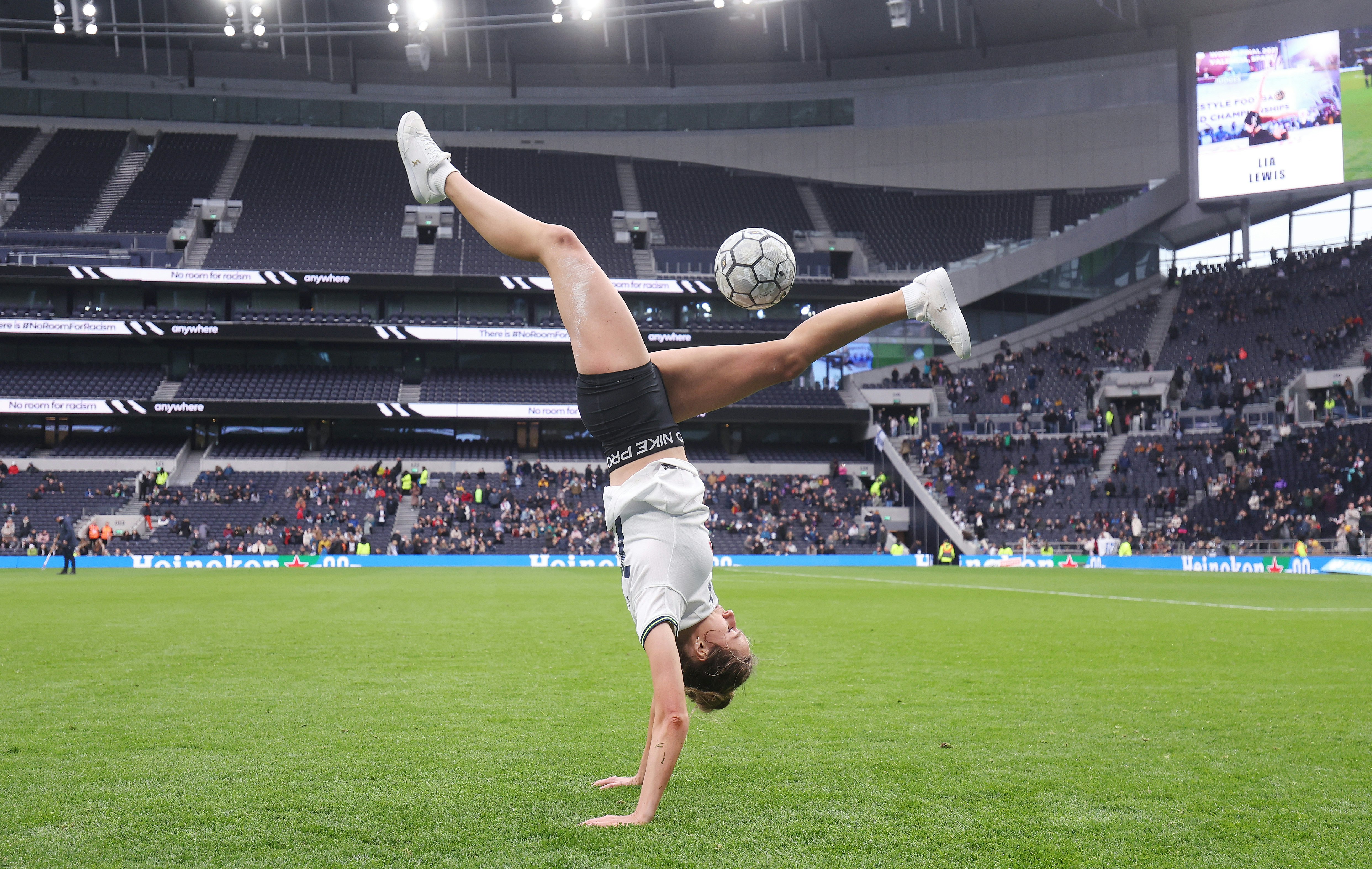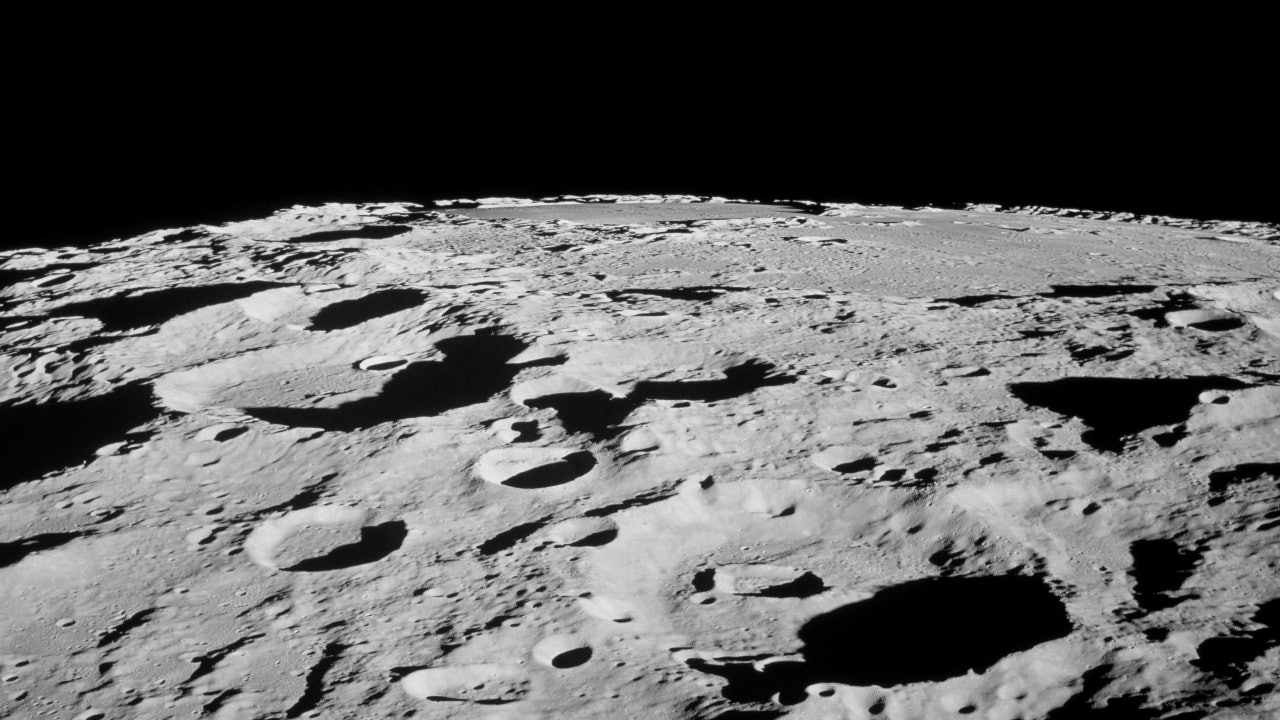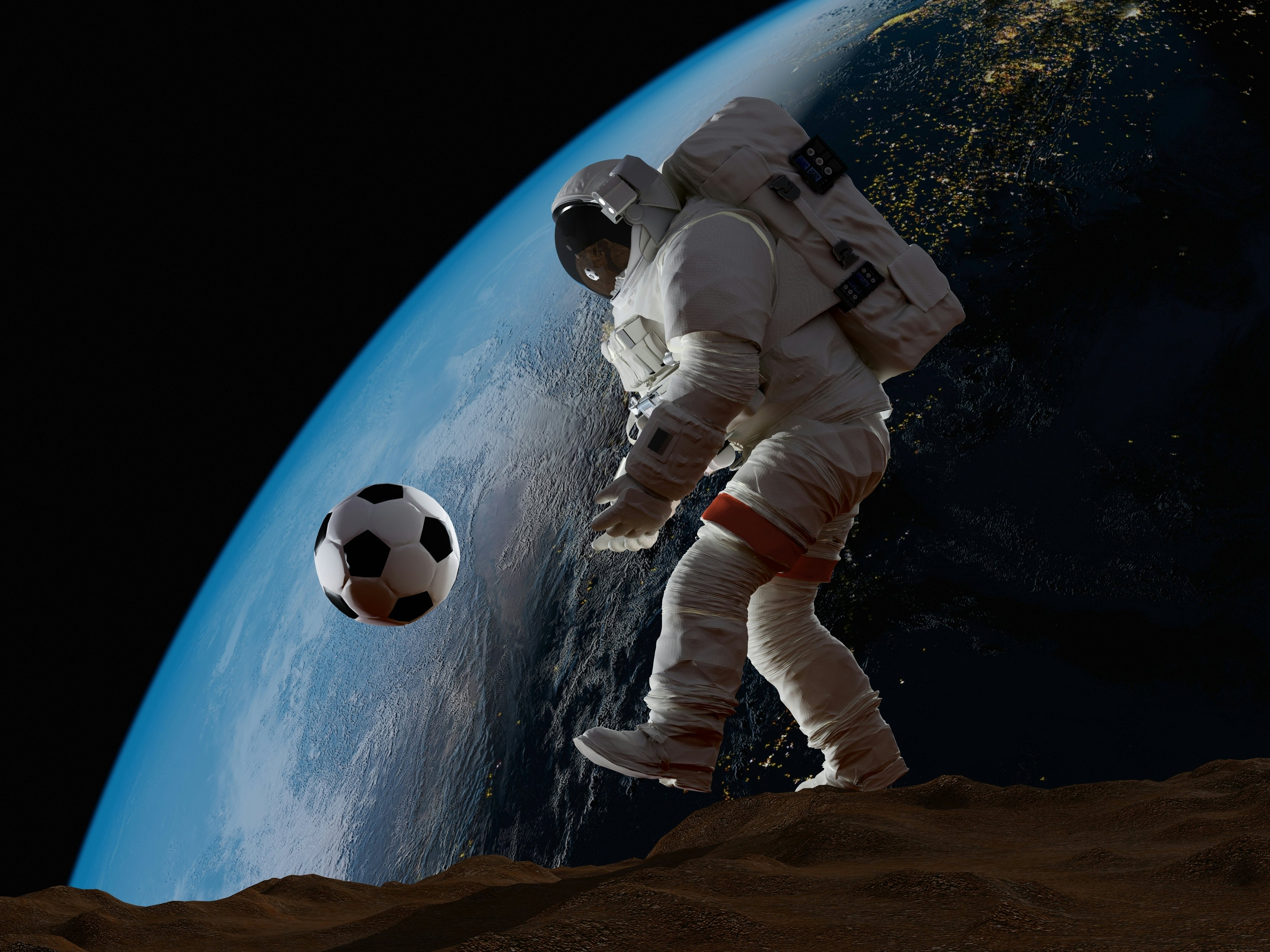
Lia Lewis’s controlled kick sends the ball shooting much farther than she’s used to. Inside her helmet, a screen is dotted with the trajectory of the ball as it flies past a holographic referee and into a large, rectangular net. “Goaaaaaaaaaaaaaal” echos inside the fishbowl around her head. A moment later, Lewis and her fellow players head to safety before solar flares reign down on the surface of the Moon.
“Never mind Wembley Stadium in London or Camp Nou in Barcelona, could there be anywhere more spectacular, challenging, and enthralling than to be among the first to play football on the Moon?” Lewis, a football freestyle world champion, tells Inverse.
It may sound like science fiction, but the fantasy of playing soccer on the Moon could be less than two decades away. As NASA looks to set up a Lunar Gateway for business on the Moon’s surface by the late 2020s, and China plan to inaugurate a permanent, inhabitable Moon base by the mid-2030s, life on the Moon suddenly seems within reach. The first lunar soccer match could kick off as soon as 15 years from now, according to a panel of scientists from The Institution of Engineering and Technology (IET).
The panelists have already done the Moon math to figure out exactly how a game of footie could be played on our favorite satellite. The results were recently published in a Lunar Football Rule Book, but whether we should be indulging in such an endeavor is a whole different game.
Lunar Soccer 101

Since the Moon has one-sixth of the gravity of Earth and jarring conditions, lunar football will look and feel very different compared to good old-fashioned terrestrial soccer.
The Moon is covered in regolith, lunar soil made up of shredded rock, mineral fragments, and volcanic glasses in a deathly concoction that can shred human tissue and rip through internal organs. The pitch would have to be prepped through laser sintering and made into one single, solid layer of melted moon particles sticking together. It will also be eight times smaller than on our planet to avoid players falling victim to exhaustion.
“It's actually much more gentle in the way the players interact with each other because of what it means to be a human in a suit on the surface of the Moon,” says Brian David Johnson, an applied futurist from Arizona State University who collaborated on this project. “We came up with new ways of thinking about the game. You're still playing soccer but it really is different.”
“It becomes a bit like soccer, but also a bit like hockey.”
Lunar football would be a five-aside, no-contact sport. Each game consists of four 10-minute quarters with 20-minute breaks in order for players to rest while their equipment is patched up. That’s almost nothing like terrestrial soccer, which is played over a tiring two 45-minute halves with two teams of 11 players facing off.
The Lunar Rule Book notes the ball will also be bigger — on Earth adults play with a size 5 of 27 to 28 inches in circumference, this ball would be a size 8 at 40.5 inches — since lack of gravity means it’ll travel six times further than on Earth. Goals will be 36 feet wide and 9.6 feet high (1.5 times wider and 1.2 times higher than terrestrial ones) to ensure the ball makes it in.

Another big change? No more corner kicks.
“We ended up putting kind of a net around the top and around the sides, so there's no out of bounds because you don't want somebody kicking the ball and then flying back to Earth,” says Johnson. “It becomes a bit like soccer, but also a bit like hockey.”
Obviously, players won’t be running around in shorts and a t-shirt, either. Game kits will be worn over airtight, flexible suits with built-in padding for protection and sweat-absorbing flannel. Inside the suit, temperature-adjusting tech will balance out the harsh climate on the Moon’s surface. Protective helmets will shield players’ heads and allow players, coaches, and referees to stay in touch with each other thanks to a specialized communication system. Despite the helmet, players will still have a full vision of the pitch thanks to a 180 to 270-degree visibility visor and a Heads Up Display that tracks everything from the scoreboard to suit status.
“They might asphyxiate before they could be helped.”
Players will also need to lug around their own oxygen tanks and water for cooling, probably on their backs. Thanks to the Moon’s lower gravity this isn’t an unreasonable ask, but one wrong move could damage the astronaut’s suits with deadly results, according to Paul Byrne, an associate professor of Earth, Environmental, and Planetary Sciences at Washington University in St. Louis who was not involved in drafting the rule book.
“They might asphyxiate before they could be helped,” Byrne tells Inverse.
Should We Be Playing Soccer On The Moon?

Can people play soccer on the Moon is a fine enough question — and a fun thought experiment — but should we do it is an entirely different debate. After all, humanity doesn’t exactly have the best track record when it comes to treating newly discovered landscapes with respect.
“Are we entitled to that landscape, and to litter it with human debris?” wonders Byrne. “That's a question I can't answer — but one we should ask as humans prepare to go back into deep space.”
Or, put another way: Is it worth damaging the lunar surface for a bit of entertainment? Tony Milligan, a researcher of philosophy of ethics for the Cosmological Visionaries project at King's College London and the author of Nobody Owns the Moon: The Ethics of Space Exploitation, warns that we might be at risk of McDonaldizing the Moon. (Picture that episode of Futurama and you’ll get the idea.)
“These scenes where we just pop off to the Moon, and the Moon is a sort of theme-park-golf-course-type thing with lots of Las Vegas-type billboarding,” says Milligan. “That would be an ethical failure.” (Milligan was not involved in the lunar soccer panel.)
To counter these scenarios, experts have suggested the establishment of Planetary Parks, similar to the American National Parks system, which would segment certain regions of space to preserve their pristine wilderness. Milligan proposes a “1/8th principle” for space development, which would limit our economic expansion of space to one-eighth of all available resources. This might sound conservative, but it’s actually huge — one-eighth of the iron in the asteroid belt is more than a million times all of the Earth's iron ore reserves — while still ensuring a reasonable “breaking distance” before space becomes “super-exploited.”
“In principle, you could try this,” says Milligan. “But it's difficult to apply in the case of the Moon because we're going to get there so quickly.”
“This is a record of billions of years of history, that’s relatively unchanged over vast periods of time,” says Milligan. “Would you really want to have damage to that being a bundle of people playing soccer on it?”

It’s limited (and limiting) to think of humans as completely separate entities from the rest of the galaxy, says Milligan, “I don't see it as odd at all. Think of the Moon and Earth as a single system, in which case, it makes sense to be there. But what should we be doing there? That's where the problem of attention comes in.”
Playing soccer on the moon is the sort of thing you could do “but probably shouldn’t,” says Milligan. “There's good reasons for us to be in places, but those good reasons aren't football. I think that we can miss the main game, and that's Lunar Science. We desperately need Lunar Science.”
But is there also room for some fun distractions to go with that science? It’s probably inevitable that once humans are living on the Moon or elsewhere in space, other human inventions like soccer (and McDonald’s) will follow. For the time being, the Lunar Football Rule Book is just a thought experiment: a way to get kids excited about science and engineering, not part one in a plan to host a future World Cup on the Moon.
Neither Lia Lewis nor any other professional soccer players have been actually training to go up to the Moon or have any real plans to make that happen. Still, she likes to wonder what good her skills could be up there.
“While some of the tricks I’ve perfected here on Earth may become redundant, there would be more that could be created thanks to the different conditions on the Moon,” says Lewis. “It would be a whole new ball game."







